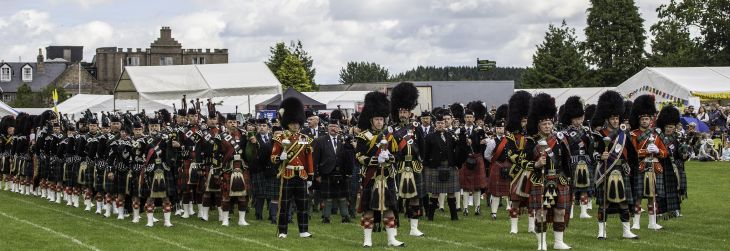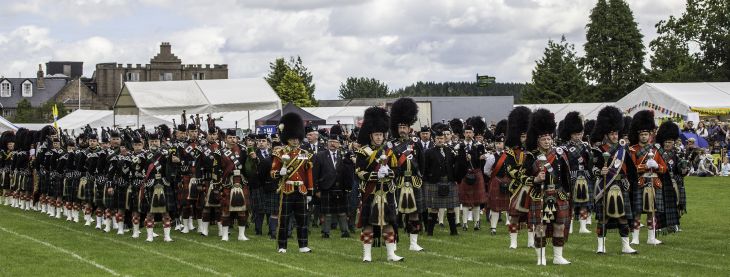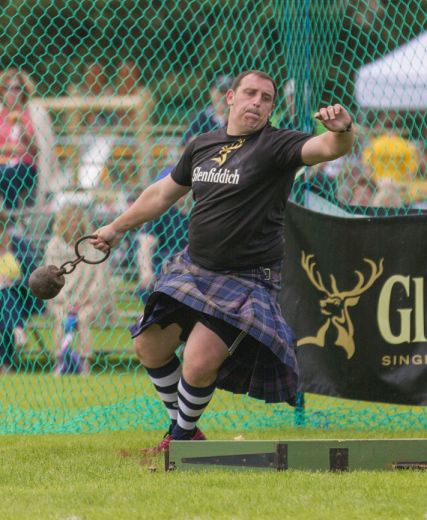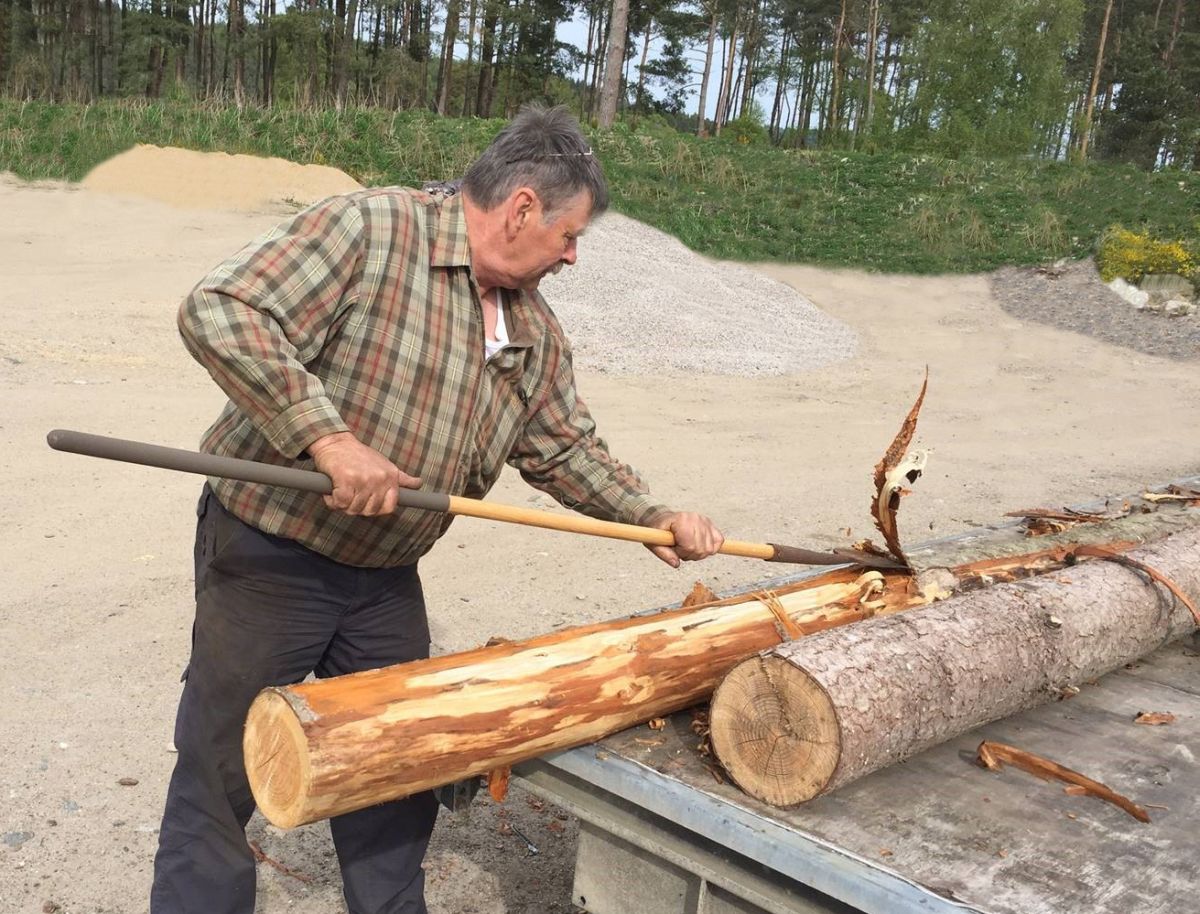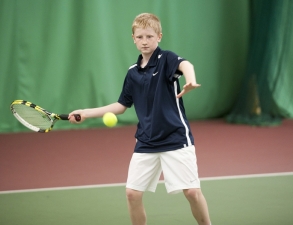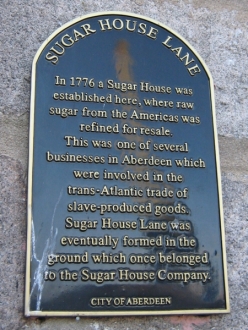A royal visitor helped to crown celebrations marking the 150-year history of Aboyne Highland Games on Saturday (Aug 5). With thanks to Ian McLaren, PR account manager, Innes Associates.
In bright sunshine and warm temperatures, with occasional showers, an estimated crowd of over 9,500 visitors from around the world descended on Aboyne Green to enjoy the town’s annual celebration of Scottish heritage.
Among the crowd was Her Majesty The Queen, who was making a private visit to the games.
Founded in 1867, Aboyne Highland Games has grown to become one of the highlights of the Royal Deeside summer events calendar, taking place annually on the first Saturday in August.
A packed programme of 98 events, featuring solo and massed piping, highland dancing, light and heavy athletics and fiddle competitions, kept the gathered crowds entertained throughout the afternoon.
Her Majesty was welcomed to Aboyne Highland Games by its chieftain, Granville Gordon, the 13th Marquis of Huntly, Scotland’s premier Marquis, and chairman Alistair Grant. Mr Grant’s granddaughter, 11-year-old Carlie Esslemont presented The Queen with a posy of flowers.
During her visit, The Queen dedicated the new Aboyne Caber which was specially commissioned to mark the 150th anniversary and featured in the afternoon’s events. Local heavy athletes, Jamie Dawkins and John Fyvie had the honour of presenting the caber to Her Majesty, who also met its creator, Murray Brown, and other members of the games’ committee.
The Queen, who was making her first visit to Aboyne Games, followed in the footsteps of her forebears. In 1876, her grandfather, George V, and great-grandfather, Edward VII, attended the games along with Prince Leopold, the youngest son of Queen Victoria. While in 1922, Princess Andrew of Greece – the mother of The Duke of Edinburgh – attended the games with her daughters Princesses Margarita and Theodora of Greece.
The visit also came just two months after long-serving committee member Peter Nicol was awarded an MBE in the Queen’s Birthday Honours for services to highland games, the economy and voluntary service in the north of Scotland.
In further recognition of his contribution to highland games, which has included nearly 50 years on the Aboyne Highland Games committee, Mr Nicol was presented with a Certificate of Appreciation from the sports governing body, the Scottish Highland Games Association (SHGA). Honorary president of the SHGA, Jim Brown, presented the award which has been introduced to commemorate the association’s 70th anniversary and acknowledges the outstanding service given by individuals in support of highland games across the country.
Organisers of Aboyne Highland Games have worked hard to mark the event’s milestone 150th anniversary in a number of ways, which in turn has helped shape the future story of the event. This included a memory book containing photographs and written reminiscences contributed by members of the public and charting a century and a half of the games.
Ten pipe bands also performed throughout the day, providing a stunning spectacle
Four events that have been a fixture of Aboyne Highland Games since its inception in 1867 were classed as Gold Events this year. With newly commissioned trophies – designed by local teenager Angus Fraser – and increased prize funds, competition in the four events was hotly contested.
Kelty piper Alan Russell claimed the first trophy when he won the Piobaireachd open piping event. Clocking a time of 10.48 seconds, Sam Lyon of London beat a strong field of 12 runners to lift the Gold Event trophy in the 100 Yards Race. In the Heavy Hammer, Vladislav Tulacek from the Czech Republic threw a winning distance of 109ft 6ins to collect the third trophy. On the highland dancing boards, the final trophy went to Rachel Walker from Fettercairn, who was placed first in the Highland Reels aged 16 and over category.
In the late afternoon, spectators were treated to display of pole vaulting. The event, which featured in the inaugural games, returned to Aboyne Green after a near 40-year absence. Nine competitors took part in the event, which was once a staple of highland games across Scotland and is now only staged at a handful of games.
Drawing enthusiastic cheers from the watching crowd, competitors planted the rigid aluminium pole into the grass and with apparent ease – defying the great dexterity required – twisted and turned their bodies to vault increasing heights. Clearing the bar at a height of 8ft (2.43m) and jointly winning the competition were Callum Robertson from Aberdeen and Evyn Read from Canada.
Four heavy athletes jointly won the open caber toss competition, giving them honour of attempting to toss the new 23ft 6in (7.15m) long Aboyne Caber to land in the perfect 12 o’clock position. However, neither Craig Sinclair, Lorne Colthart, Lucas Wenta nor Scott Rider could achieve the feat with the 130lbs (59kg) log.
The hill race was closely fought, with a field of 92 runners taking on the 6.8-mile route that follows part of the Fungle Road and circles the base of Craigendinnie. The first male home was Kyle Greig who finished ahead of second placed James Espie. In the ladies event was won by Stephanie Provan, with Sally Wallis finishing second.
Ten pipe bands also performed throughout the day, providing a stunning spectacle and sound when they played en masse. Those participating were Ballater and District, Banchory and District, Clan Hay, Ellon Royal British Legion, the Gordon Highlanders Association, Grampian and District, Huntly and District, Lonach, Newtonhill, and Towie and District.
Alistair Grant, chairman of Aboyne Highland Games, said:
“It was an honour and a privilege to welcome Her Majesty to Aboyne Highland Games to mark our 150th anniversary. She took a real interest in how our new Aboyne Caber was crafted and seemed particularly taken to learn about the visits her ancestors had made to the games. Our first royal visit was in 1873, when the then Prince of Wales, later Edward VII, attended and it is wonderful to continue that long association with the royal family today.
“We have had a superb crowd on the green who have been kept thoroughly entertained by our packed programme of 98 events. The atmosphere has been excellent. Visitors have travelled from near and far, which goes to show the huge appeal that highland games still have. That is really positive for the future.
“The standard of competition was excellent, with some really strong fields. Tossing the caber, tug o’ war, the hill race and children’s race all drew passionate support from the crowd. While the skill of the pole vaulters held everyone’s attention. Our thanks go to all those who have participated, visited, supported or helped organise today, making it a truly outstanding day and ensuring the 150th anniversary of Aboyne Highland Games will be long remembered.”
Founded in 1867, Aboyne Highland Games is a traditional Scottish highland games held annually on the first Saturday in August. The Aberdeenshire event, held under the patronage of Granville Gordon, the 13th Marquis of Huntly, attracts crowds of up to 10,000 people each year.
Featuring a programme of traditional highland games events, including highland dancing, tossing the caber, piping and fiddle competitions, the event on the town’s green attracts visitors from around the world and makes an important contribution to the local Deeside economy. Further information on Aboyne Highland Games can be found at www.aboynegames.com.
- Comments enabled – see comments box below. Note, all comments will be moderated.

